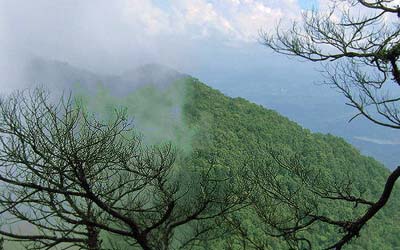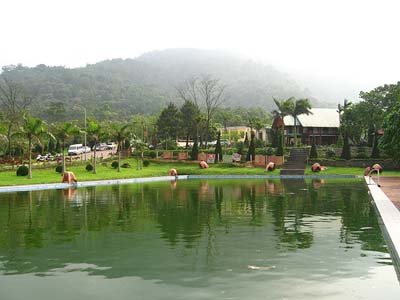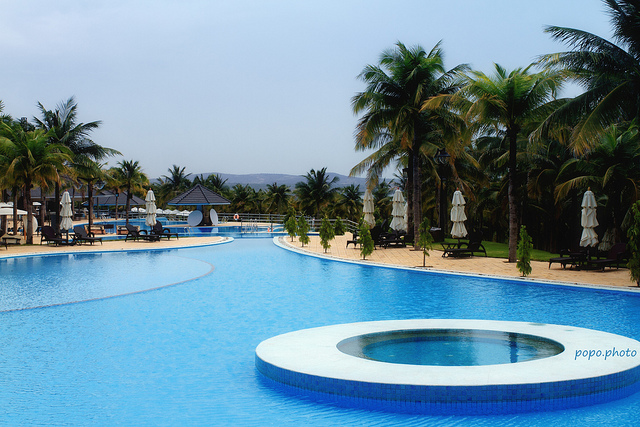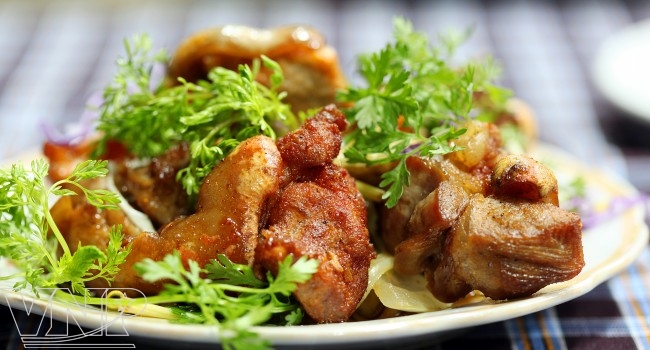The H'mong ethnic group with many unique customs and traditions. Robbing wife is a typical custom of them!
In spring, when the apricot flower forest blooms out with white, it signs a wedding season coming with brocade colors in many villages throughout the North West and North-East. The Mong has custom taking his beloved girl to home to become his wife (as robbing wife) As a young man who knew a girl and want her as his wife he would go and force her to his home.
Traditionally, when a boy wants to marry a girl, he will make his intentions clear, and will "rob" her during day light or night at any opportunity that is appropriate. This is traditionally only a symbolic kidnapping.
Happiness when rob and be robbed
Before kidnapping her, the boy must first give a gift to the girl whom he wants to marry. After a couple of days, the boy can then kidnap the girl. If the boy has never given a gift to the girl, she is allowed to refuse and go back home with any family member who comes to save her.
The parents are not notified at the time of the kidnapping, but an envoy from the boy's clan is sent to inform them of the whereabouts of their daughter and her safety. This envoy tells the girl's family the boy's background and asks what the girl's background is.
Before the new couple enters the groom's house, the father performs a blessing ritual, asking the ancestors to accept her into the household.
The head of the household moves the chicken in a circular motion around the couple's head. The girl is not allowed to visit anyone's house for three days after this. After three days or more, the parents of the groom prepare the first wedding feast for the newlywed couple.
The wedding is usually a two-day process. The couple returns to the house of the bride's family at the end of the first wedding feast and spends the night in preparation for the next day. On the second day, the family of the bride prepares a second wedding feast at their home, where the couple will be married.
Hmong marriage customs differ slightly based on cultural subdivisions within the different Hmong community, but all require the exchange of a bride price from the groom’s family to the bride’s family.
The bride price is compensation for the new family taking the other family's daughter, as the girl's parents are now short one person to help with chores. he elders of both families negotiate the amount prior to the engagement and is usually paid in bars of silver or livestock. Today, it is also often settled in monetary terms.
Before the bride and the grooms visit the bride's family, she must wear the grooms traditional clothes.
During the wedding, there are many rules a bride must follow. When leaving the bride's house, during that process, the bride must never look back for it will make her miss her family dearly.
During the feast, no pepper dish can be served for it'll make the bride and groom's marriage life bitter.
At some point during the wedding, an elder would come ask the bride if she has any old gifts from past boyfriends. If she does, she must give them those gifts and they will return the gifts to her past boyfriends.
There is a saying that if a bride does not give her past boyfriends' gifts back, if he still really loves her and dies early, he'll come haunt her babies, which will make her babies cry a lot.
The brides maid's job is to make sure the bride doesn't run off with a guy because way back in history, many girls were forced to marry and would elope with their boyfriends.
Because the price of a bride is so high(depends on the parents), the groom's clan helps pitch in to help with the exchange of his wife. Afterwards, both the bride and groom must pay them back.
The custom of wife robbery is considered as marriage strategic mode. This process is very popular in the West – North-East. And they still keep this custom nowadays but it just a custom for form’s sake. Young H'Mong men and women are free to choose their partners. Marriages are absolutely forbidden between men and women of the same lineage. Matrimonial life of the Mong is very harmonious and divorce is very rare.
Love's H'mong people is still many exciting things. If you wonder,
traveling in
Vietnam travel to Northern mountains!

























